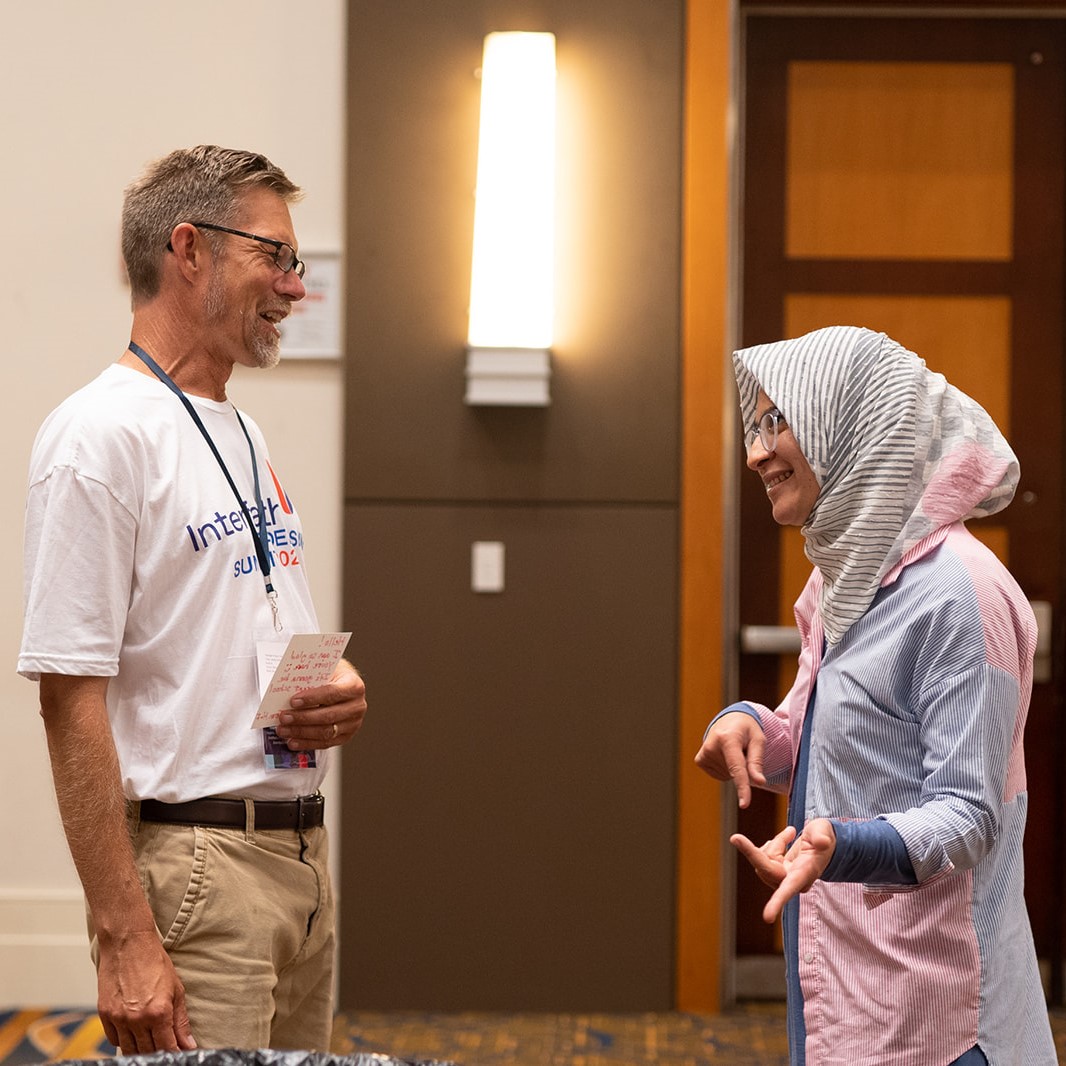Tool
Building on Existing Strengths
Design your work in a way that builds on existing community strengths and resources.

Working Collaboratively in Communities
As you plan interfaith initiatives, your first step should be to learn and reflect on the community in which you are living. You are not starting from a blank canvas – there are likely people and organizations who have long been doing great work related to your initiative. As you consider taking action as an interfaith leader, you’ll want to identify who is already leading work in your community, what programming and events are already happening, and what resources already exist.
“Asset-based” vs. “Deficit-based” Approaches
One approach to understanding your broader community is called “asset mapping.” This is a practical exercise underpinned by an asset-based approach. We’ll first explore the approach and then offer suggestions for your own asset mapping below.
Effective leaders have probably used asset-based approaches to leadership and organizing since the beginning of time. Certainly interfaith leaders such as Dorothy Day and Martin Luther King, Jr. intentionally built their work on existing resources and skills.
The power of these asset-based approaches was illuminated by the research of Jody Kretzmann and John McKnight, both faculty at the Asset-Based Community Development Institute at DePaul University. As Kretzmann and McKnight worked with communities and community members (in the 1980s), they noticed that civic leaders tended to describe communities in terms of what was missing: jobs, grocery stores, educational institutions, opportunity. This mindset meant that strategies to address challenges in the community were often based on addressing needs and attending to problems. Kretzmann and McKnight observed that as community members saw their neighborhoods through this lens of deficit, they often felt disempowered and unable to take action on their own.
Kretzmann and McKnight sought to codify an approach that, by contrast, empowered local residents to take leadership in strengthening their communities. Rather than focusing on deficits locally, Kretzmann and McKnight highlighted the need for different questions: What resources do we already have? What can we utilize to strengthen our communities?
Kretzmann and McKnight’s research demonstrated the power of approaching our work with a focus on the assets of the communities involved. We don’t ignore challenges, but we seek to tackle those challenges by first asking: What resources already exist? This approach empowers us and our partners to use our strengths to make progress.
Kretzmann and McKnight highlight three categories of assets available in every community:
Individuals and their gifts
including young people, students, artists, the elderly, teachers, and people from the variety of diverse communities in the area
Associations
including religious communities, neighborhood groups, student clubs, unions, and other civic collectives or cultural groups
Institutions
including local schools, college campuses, parks, libraries, local government, hospitals, etc.
Many of these assets also come with physical resources (buildings, land, etc.), as well as powerful relationships within and across these groups that can also be utilized toward a particular end.
Create Your Own Asset Map
This asset-based approach is an effective frame for considering the opportunities and possibilities within your own area. While it’s important to understand the reality of any difficulties that your work seeks to address, approaching your work with an “asset-based” mentality allows you to work alongside existing community resources, including the people, institutions, and culture of the area. This idea of “working with” rather than “working for” communities is essential for the success of any initiative.
Kretzmann and McKnight offer a simple visual for mapping assets in a given community. Although not exhaustive, it is a good list to reflect upon. To create your own asset map, sketch your initial thoughts as you review this visual. Then, begin to think more deeply:
- How comprehensive is Kretzmann and McKnight’s framework? What might they be overlooking that are clear assets in your community?
- What is the landscape of religious diversity in your local area? How do you see these leaders and institutions working together already?
- Who are the religious communities, non-profit organizations, and other groups that are already organizing around the issue you’d like to address?
- What blind spots might you have about assets in your community? How could you fill those blind spots? Are there people with whom you should speak to better build out a comprehensive asset map? Are there resources at the periphery you can bring into the work?
Once you have a comprehensive asset map, begin to think about how you might put that map into action:
- To whom are you already connected on this map? In person? Virtually? On social media? To whom might you be able to get a personal introduction?
- To whom do you need to reach out to begin to build some of these relationships?
- What more do you need to learn about the leaders and culture of your community? How will you gain that information?
Going Deeper: Additional Resources
Read
Building Communities from the Inside Out
Spend more time learning about Jody Kretzmann and John McKnight’s research through their book, Building Communities from the Inside Out: A Path to Finding and Mobilizing a Community’s Assets (1993).
Learn moreExplore
Asset-Based Community Development
The Episcopal Church uses asset-based community development theory to undergird their international relief efforts. Learn more about how they use this framework in their relief and development activities.
Learn moreExplore
Community Cultural Wealth
Spend time exploring Yosso’s idea of cultural wealth in communities.
Learn more